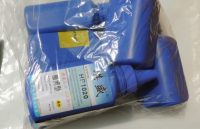Companies have been exporting carfentanil into the US, Canada, UK, France, Germany, Belgium and Australia, with Canadian authorities discovering it inside cartridges.
CBC reported on an investigation by the Associated Press (AP), which found that the “powerful chemical”, which has been “killing unsuspecting drug users and is so lethal that it presents a potential terrorism threat”, has been exported by “several Chinese companies” to western nations. For a “few thousand dollars”, 12 Chinese companies “said they would export the chemical”, which is a “synthetic opioid”, with a kilogramme shipped “no questions asked” for as little as $2,750 (€2,470).
The drug is said to be the “latest scourge in an epidemic of opioid abuse that has killed tens of thousands of people in the United States alone”, with dealers cutting carfentanil and “its weaker cousin” fentanyl into heroin and “other illicit drugs” in order to “boost profit margins”. The chemical is not a controlled substance in China “despite the dangers”, and it is “manufactured legally and sold openly online”, with the US government pressing the country to blacklist it.
China has “yet to act” however, which means the substance, which has been “compared with nerve gas”, can “flow into foreign markets unabated”. The Chinese Ministry of Public Security refused to comment to the AP, with the investigation noting that before being found by drug dealers, the chemical and “substances like it were viewed as chemical weapons”, because “an amount smaller than a poppy seed can kill a person”.
In turn, fentanyl is “up to 50 times stronger than heroin”, while carfentanil is “100 times stronger than fentanyl”, and Andrew Weber, a former Assistant Secretary of Defence for Nuclear, Chemical and Biological Defence Programmes, stated that “it’s a weapon. Companies shouldn’t be just sending it to anybody”.
Canadian authorities seized a kilogramme hidden in a box “labelled printer accessories” which contained “50 million lethal doses”, which was “more than enough to wipe out the entire population”, and the drugs were hidden “inside bright blue cartridges labelled as [toner] for HP LaserJet printers”. Royal Canadian Mounted Police officers in Vancouver had to use hazmat suits and bind “wrists, ankles, zippers, and face masks” with tape to deal with the cartridges
The chemical was first developed in Belgium in the 1970s, and its “only routine use” is as an anaesthetic” for large animals including elephants, though governments “quickly targeted it as a potential chemical weapon”. It has also been used in “at least one assassination attempt”, and Russian forces used it against Chechen separatists “who took hundreds of hostages” in a Moscow theatre in 2002.
The chemical, alongside fentanyl is banned from warfare under the Chemical Weapons Convention, and in 2014 US authorities only seized 3.7 kilogrammes of the latter, though by mid-July this year, they had seized 134.1 kilogrammes. Despite the crackdown, “people willing to skirt the law are easy to find” in China, though the US is “getting unprecedented cooperation from China”, with “unusually deep information sharing” taking place.

